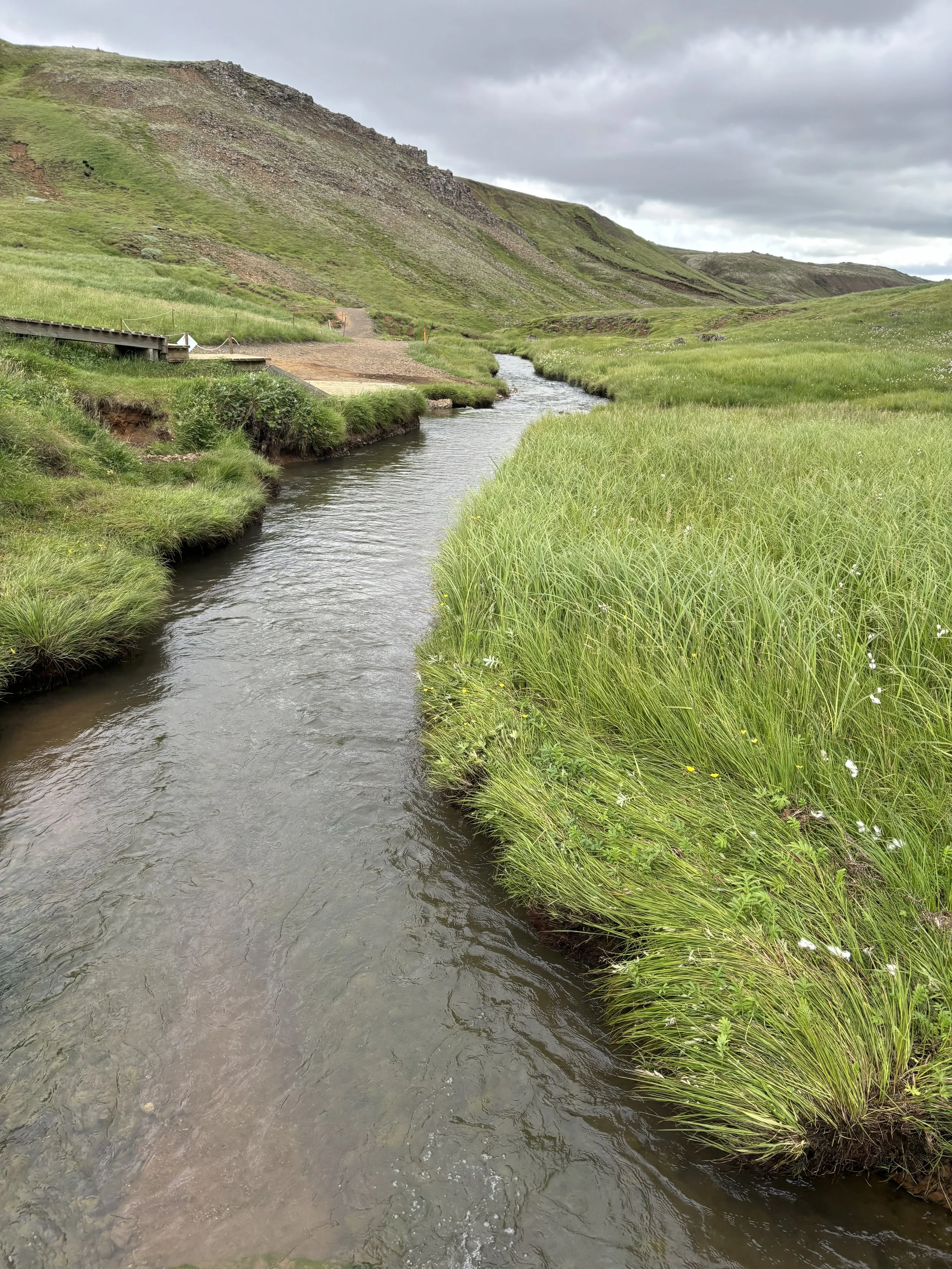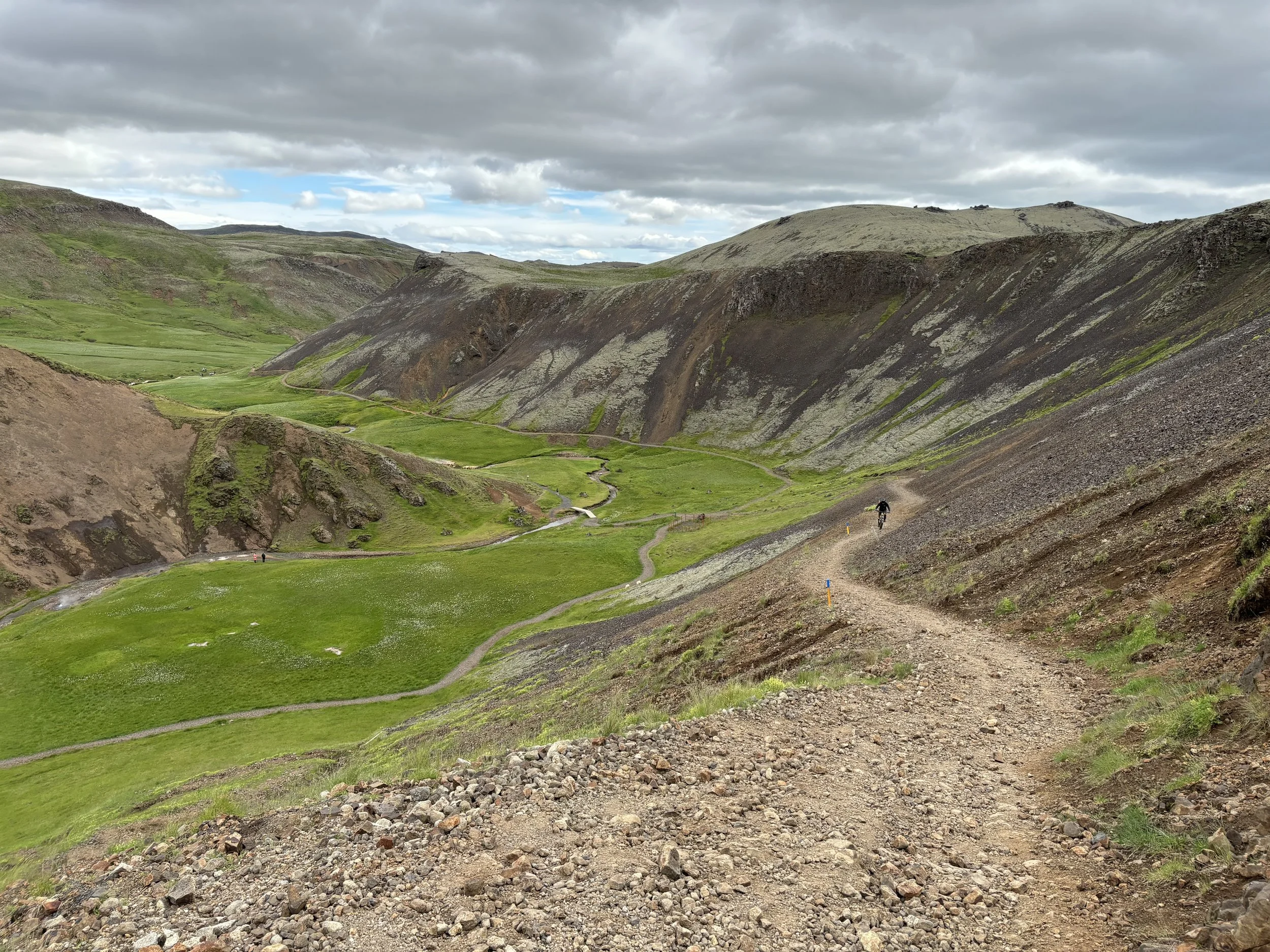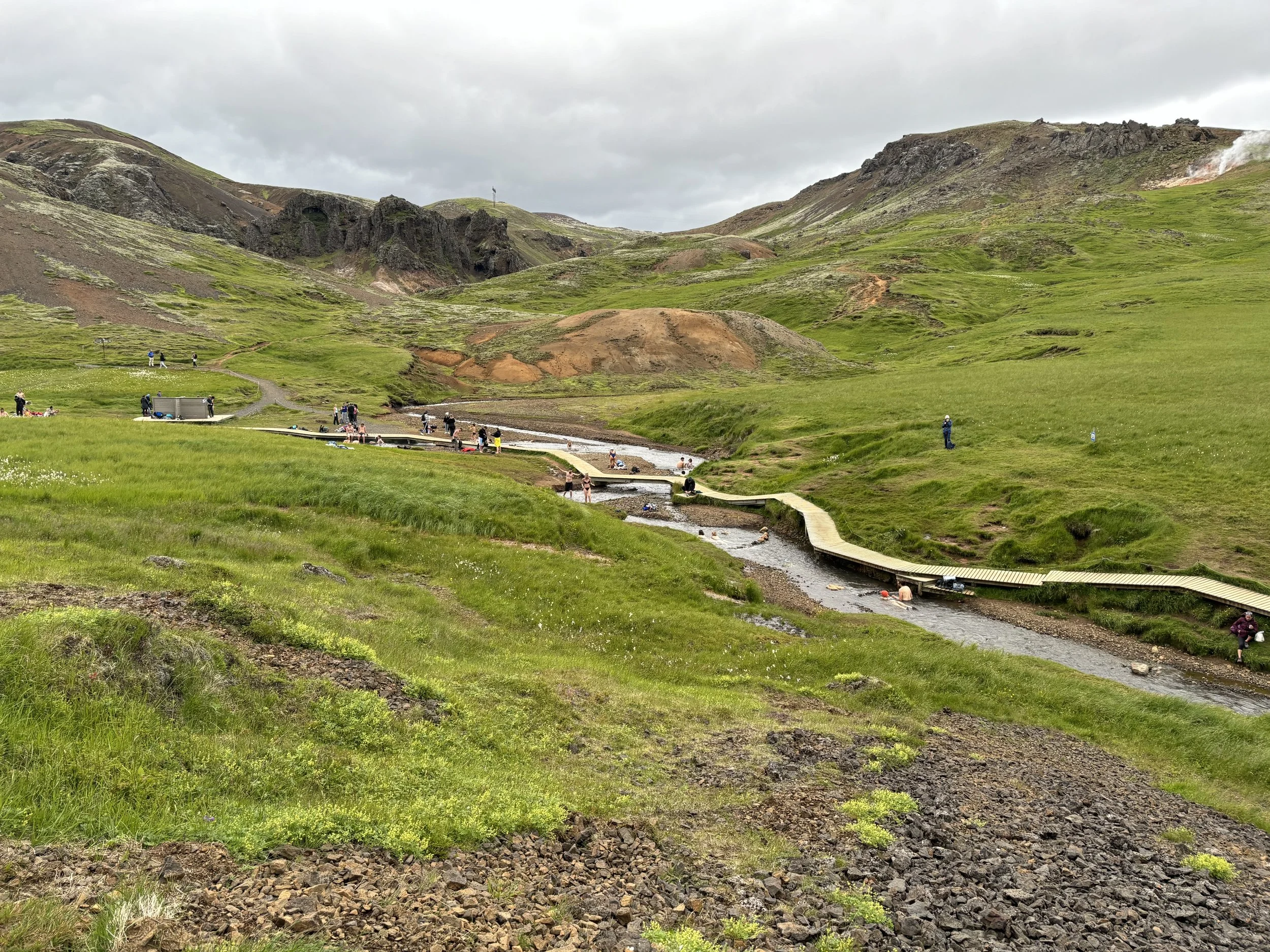Running Through Fire and Ice | Iceland
The Boiling River of Reykjadalur
The first time I "visited" Iceland, I was actually on a Peloton treadmill, staring at a screen. Thanks to Peloton’s preloaded videos, I could jog through Iceland without ever leaving my house—the future is truly here. There I was, sweating , watching a digital version of Reykjadalur Valley roll past me, dreaming of what it would be like to actually lace up my trail shoes and run through the real thing. Running through the real was rather very different experience that I imagined. Add the texture of the ground, the smell, the coolness of the air, the mystical atmosphere, the people….result..wild run that beats a treadmill run anyday.
The Reykjadalur trail
Fast forward, and here I was—standing in Iceland, parked near Reykjadalur Café, lacing up my running shoes, about to embark on the very same trail I had once only experienced through a screen. But before I even started running, I found myself stuck on something completely different—how we insist on butchering Icelandic names to make them sound more “English-friendly. Take “Reykjadalur Valley,” for example. A linguistic crime if ever there was one. “Dalur” already means valley in Icelandic, so saying "Reykjadalur Valley" is like saying "Reykja Valley Valley." It’s the same way people say "Seljalandsfoss Waterfall" when "foss" literally means waterfall or "Snæfellsjökull Glacier", when "jökull" already means glacier. Unto the trail.
Inside the ice cave of Snæfellsjökull (Glacier)
The trail was packed with hikers (carrying their swim suits), all making their way to lounge in the famous hot river, but as I started running past them, I realized something: I was the only one running. Everyone was hiking at a normal, sensible pace, while I was out here charging uphill overcaffeinated as usual. I caught snippets of conversations—German, British English, American English, Finnish, Scottish—all heading for a river dip.
People travel from all over the world for this dip
Now, Iceland is a playground for geology nerds. The whole country sits on the boundary between the North American and Eurasian tectonic plates, which are literally pulling apart and letting magma sneak up and wreak havoc. The result? Volcanoes, geysers, hot springs, steam vents, and the occasional reminder that the Earth is is a living breathing giant.
I first learned about this geology stuff back in Form 1 Geography class in Zimbabwe. I was obsessed with it—tectonic plates, geysers, volcanic activity. My teacher, Mrs. Dube, could explain it all with the enthusiasm of a teacher who had never seen any of it in real life. It was fascinating back then, but even more surreal now, running on a trail where I could actually see steam rising from the ground and smell the sulfur in the air. I bet Mrs. Dube would be half impressed, half horrified to know that I was now running on top of all that unstable geology instead of observing it safely from a textbook.
Thingvellir National Park is where the Eurasian and North American tectonic plates meet.
Reykjadalur is famous for its hot springs, which turn the river into a steamy, dreamlike wonderland. The air was damp, thick with the rotten-egg stench of sulfur. Sheep grazed lazily on the green slopes. The trail twisted and turned, every bend revealing something new—a gurgling mud pot, a wooden boardwalk over bubbling water, a mountain biker who had completely given up and was now walking his bike uphill in pure defeat. I passed him, feeling an unfair amount of victory, even though he was hauling 20 pounds of gear and I was just carrying my own stubbornness.
The ground beneath me felt soft and rubbery, reminding me that this was volcano land—not the most reassuring thought when you’re out in the middle of nowhere, standing on a planet that’s still making up its mind about whether it wants to explode again. Finally, I reached the hot river—a natural spa where steam curled off the surface, and people (a destination for all those people I had passed) lounged in the perfectly warm water, soaking in what might be one of the greatest free experiences on Earth. And get this: you can adjust the temperature yourself.
Yes, thanks to an Icelandic hack, you just move a few rocks around, and voilà—nature’s thermostat! Want it hotter? Shift the rocks this way. Too warm? Move them the other way. They say the best time to visit is in winter, when you can have this slice of paradise all to yourself. In summer, it can get crowded with tourists, but honestly? Some things are better shared. This was one of them.
And peloton treadmill run could not have prepared me for the Reykjadalur Hot Springs run.
Seljavallalaug free hot swimming pool






